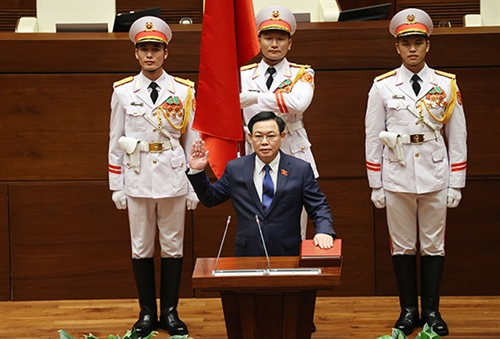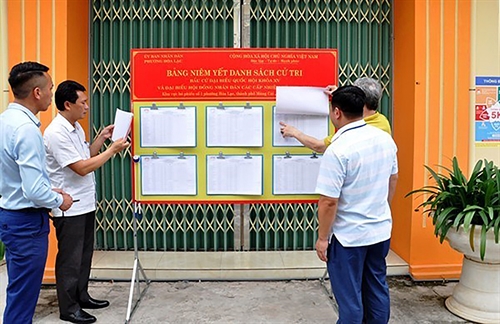Could you make an overall evaluation of the results achieved after five years’ implementing the 2015 Statistics Law?
The 2015 Statistics Law, composed of nine chapters with 72 articles and one appendix providing the list of national statistical indicators, came into force on July 1, 2016. After more than five years of implementation, the Statistics Law and guiding texts have made positive impacts on statistics work.
The Law has created a legal basis for statistical activities, confirming the position and important role of statistics and increasing the effect and effectiveness of state management of statistics work.
Besides, the quality of statistical information has been incrementally improved. Statistical information becomes more and more complete and close to the actual situation of the country’s socio-economic development. In addition, the sense of observance of the statistics law of organizations, businesses and individuals has been increasingly raised.
One of the differences between the 2015 Statistics Law and its 2003 version is the supplementation of regulations on use of administrative databases so as to boost the exploitation and use of these data in statistics work. In fact, the exploitation of administrative databases such as data from the tax and customs sectors or business registration data in recent years has made an important contribution to improving the quality of information collection of the statistics sector.
Along with that, after five years’ implementing the Law, the coordination between the General Statistics Office of Vietnam (GSO) and ministries and sectors has seen remarkable progresses. Up to now, the Ministry of Planning and Investment [the GSO’s managing agency] has signed regulations on sharing of statistical information with 11 ministries and sectors, including the Ministries of Industry and Trade, Agriculture and Rural Development, Education and Training, Health, and Information and Communications, the Committee on Ethnic Minority Affairs, the Party Central Committee’s Economic Commission, the General Department of Taxation, among others.
 |
| A press conference announcing the labor and employment situation in the third quarter and nine months of 2021__Photo: Phan Tuan Anh/VNA |
In furtherance of the Statistics Law, ministries and sectors have reviewed and developed their own statistical indicator systems in conformity with the national statistical indicator system to serve management activities. Provincial-, district- and commune-level indicator systems have also been developed and implemented, thus helping raise the effectiveness of direction and administration work of Party Committees and authorities at all levels.
In addition, the application of information technology in statistics has been further accelerated and gained new achievements, such as application of computer assisted personal interviewing (CAPI) and online survey (e-form); integration of data on systems, use of blockchain technology in retrieving livestock data or use of infographics in disseminating statistical information. During the 2019 Population and Housing Census, Vietnam managed to apply information technology to all processes of the census. This was appreciated by the United Nations Population Fund (UNFPA) and mentioned as a good experience in conducting population censuses at many international meetings.
The quality of statistical information has been increasingly improved, actively helping the Government formulate and administer macroeconomic policies, promote the country’s economic growth, and resolve socio-economic issues.
Apart from achievements, the implementation of the 2015 Statistics Law has revealed several shortcomings. For example, the list of statistical indicators issued together with the Law has yet to be updated and, as a result, failed to promptly reflect socio-economic phenomena that have actually arisen and become prevalent in society as well as a number of laws, policies and development orientations recently adopted by the Party, National Assembly and Government. Hence, the Ministry of Planning and Investment has studied and submitted to the Government and National Assembly a draft Law revising the Statistics Law, focusing on amending the list of national statistical indicators.
Could you brief about the contents of the draft Law revising the Statistics Law?
Based on internationally recognized statistical principles and methods and regulations of the statistics law and other specialized laws, taking into account the computability of statistical indicators proposed by ministries and sectors as well as practical experiences of other countries, the Ministry of Planning and Investment suggested the Government propose the National Assembly to amend major contents [of the 2015 Statistics Law] that are clear and can be implemented immediately. This aims to ensure timely provision of information that is close to the country’s situation and reflects the implementation of Vietnam’s international commitments in the new period as well as statistical data and information to serve direction and administration work.
Hence, amendments to three major contents of the 2015 Statistics Law will be submitted by the Government to the National Assembly, aiming to clarify the process of compiling national statistical indicators without causing impacts or influences to other contents of the Law.
Specifically, Article 17.6 on the process of compilation of the indicators of Gross Domestic Product (GDP) and Gross Regional Domestic Product (GRDP) would be amended; meanwhile the re-evaluation of the scale of GDP would be reviewed for reporting to the Government for submission to the National Assembly.
Article 48.2.d on disclosure of statistical information relevant to provincial statistical indicators which belong to subdivisions of the national statistical indicators would also be revised.
At the same time, the list of national statistical indicators issued together with the 2015 Statistics Law would be replaced with a new one.
Could you talk a little bit more about the replacement of the current list of national statistical indicators?
It can be said that the replacement of the list of national statistical indicators is the “spirit” of the Law revising the 2015 Statistics Law.
The purpose of the revision of the list of national statistical indicators is to create a legal basis for prompt collection and sum-up of statistical information, ensuring objectivity, accuracy, timeliness, completeness and consistency of such information to serve the shaping of policies and administration of socio-economic development by the Party and the State.
The legal ground of such revision is Article 18 of the 2015 Statistics Law which stipulates: “Based on socio-economic development tasks, requirements for state management and international integration in each period, the Government shall review and propose the National Assembly to revise the list of national statistical indicators according to the fast-track procedures”.
Moreover, to meet practical demands and management requirements, the revision of statistical indicators must ensure provision of socio-economic information at the macro level; reflect and evaluate the implementation of the Resolution of the 13th National Party Congress; the 2021-30 socio-economic development strategy; sustainable development policies; and the Fourth Industrial Revolution, focusing on groups of indicators concerning digital transformation and digital economy, etc.- (VLLF)









